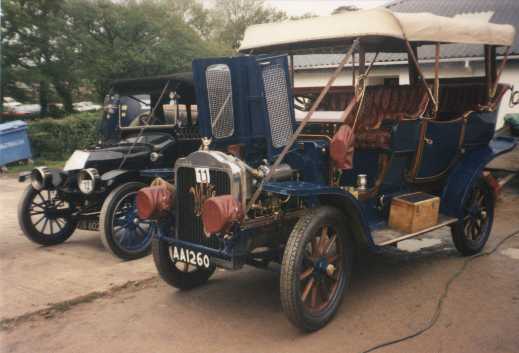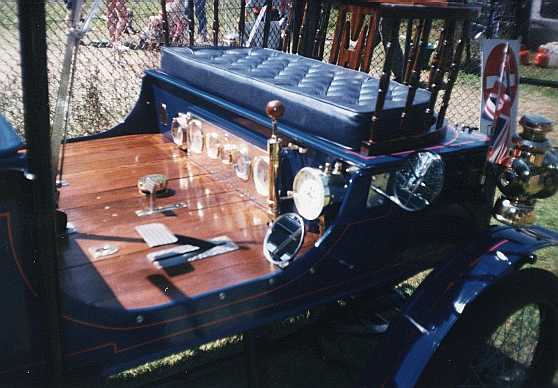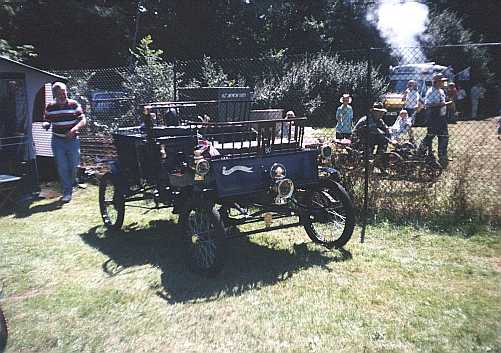
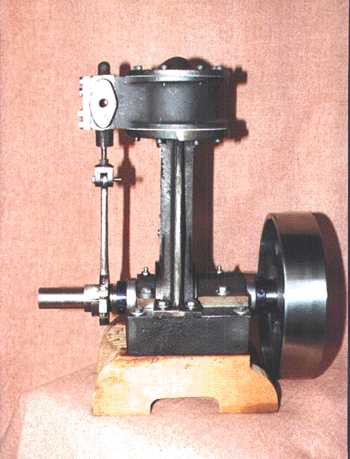
The Stirling engine is a closed cycle external combustion engine. It was patented in 1817 by the Reverend Robert Stirling - a Scottish clergyman.
It incorporates several key features which can make it a very efficient heat engine - but only at a high engine cost.
The true Stirling engine incorporates a heat store known as the regenerator, which stores heat energy during one part of the cycle and then releases it later. This all helps to save the amount of heat which is needed to run the engine - thus making it overall more fuel efficient.
An engine without a regenerator is generally known as a Hot Air Engine.
Simpler Hot Air engines were commonplace around 1880 to 1920, but fell from fashion as the electric motor took over for water pumping and driving machinery..
There were several main manufacturers, Rider-Ericsson, Robinson, Dennay, Bremen, Essex, Heinricci and many more.
Stirling and hot air engines are characterised by their low noise, smooth running and the ability to run on any source of heat.
Today If you want to buy al Stirling engine you will have to contact Whispertech in Canterbury, New Zealand, as they are almost the sole manufacturer of practical, properly engineered 1kW Stirling engine powered generator sets.
A Whispergen will currently set you back �8000 or US$11,000 but it will replace your central heating system, recharge your electric car overnight and provide power, lighting hot water and warmth all in a box smaller than a European fridge.
This page reflects some of my interests in external combustion heat engines eventually leading towards modern steam cars using external combustion engines.
These include Stirling Engines, Steam Engines and other alternatives to the internal combustion engine - such as open cycle (Ericsson) engines, gas turbines and reciprocating Brayton cycle engines.
In the last 100 years we have become too reliant on the ubiquitous internal combustion engine which in turn relies on high grade refined petroleum fuels for its operation.
This page and the linked pages, try to offer some basic information about other types of heat engine which will literally run on any source of heat, be it solar, geothemal, gas, wood, coal, biomass or buffalo dung.
From garbage, to used engine oil the external combustion engine can be made to run on any fuel.
As well some of my own ideas and articles I will try to point the interested reader towards informative sites, where information is available to a much greater depth than my humble homepage can offer.
You can find some of these links on the Wastewatts Links Page
Many pages are published by like minded amateurs based on their experiences of challenging mainstream practices or just building engines for fun. Did I mention that I have watched a television powered by charcoal?
So read on with an open mind, for tomorrow you will get into you car, and burn high grade petroleum at a rate of at least 15,000 BTU/hr expelling 10,000BTU/hr straight out to the atmosphere, when all the time it could be doing some good.
These engines were devised in 1952 by A.D. Manson and are a cousin of the Stirling engine.
You can read the original article here.
They use the expansion an contraction of air to produce mechanical work, but unlike the Stirling, they do not require a separate linkage to drive the displacer, as it is fixed to the top of the power piston and moves with it.
The power piston is fitted with ports which open at TDC and BDC and allow a fresh charge of air to be admitted from the atmosphere at the top of each stroke - in this respect they are open cycle external combustion engines.
They are attractive because of their sheer simplicity, few moving parts and relatively simple to build.
I expect they would have applications in the Developing World for pumping water, turning light machinery or generating modest quantities of electricity possibly for a small village community.
As such they will run on any source of heat, and can incorporate salvaged automotive parts.
I am currently working on a variant of the Manson - which is called the Transferator Engine. It is even simpler and incorporates improved heat exchangers to make it more efficient. It is easily constructed from stainless steel cooking containers and may welll have applications for water puming and electricity generation in the Developing World.
Steam engines were the main industrial prime mover up until WWII, and steam ships with reciprocating engines continued right up until the 1970s. Some parts of the world still rely on steam for their rail transport, and a very high percentage of all the electricity generated in the world, uses steam, somewhere in the generation process.
Steam has always been considered to be a heavy, cumbersome technology and not easily controlled - but it does not need to be that way.
Since about 1900, pioneers of lightweight steam technology have produced advanced high speed engines, using flash steam generation to produce very compact powerful engines. In the 1930's, racing hydroplane enthusiasts produced model engines, with thimble sized pistons, which would rev to 8000rpm and produce over a horsepower. These competed directly with the model spark ignition petrol engine which were just starting to appear.
In the 1920s and 30s, Abner Doble produced a revolutionary steam car, which could out perform any gasoline powered car on the road, and yet return over 30mpg.
There could well be an rennaissance in lightweight steam technology in the form of steam-electric hybrid cars. Steam technology controlled efficiently with modern electronics could well be a winning technology.
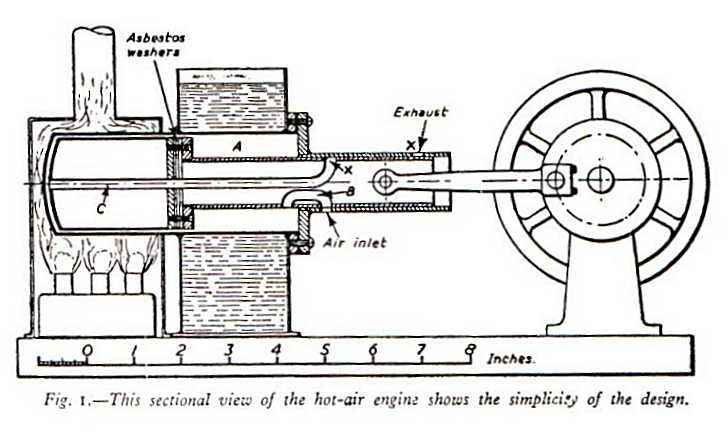
These usually use the expansion of a heated gas working against a piston or turbine to produce mechanical work.
Air expands when heated, and if constrained by a piston, it will do work on that piston causing it to move. This is a simple fact and it doesen't matter if you are in Monson Road or on the Moon, a heat engine can be devised around this basic physical principle.
Stirling engines operate on the basis of having a fixed amount of air sealed within the engine and are known as closed cycle hot air engines. The air is alternately heated then cooled by moving it from the hot side of the engine to the cold side by means of a displacer and the resulting rises and falls in internal pressure do work against a piston. The reciprocating motion of the piston is converted by means of a connecting rod and crankshaft produce rotary motion. The displacer is driven by an additional linkage from the crankshaft and generally produces no work itself.
Other types of engine exist, where the air is not trapped inside the engine but is discharged at the end of each stroke and a fresh charge taken in. These are known as open-cycle engines. Open cycle hot air engines have been proposed and built by many engineers over the years. One of the most prolific was John Ericsson who's name has been perpetuated in the Ericsson cycle engine.
For a potted history of John Ericsson's life see Bob Sier's excellent short biography.
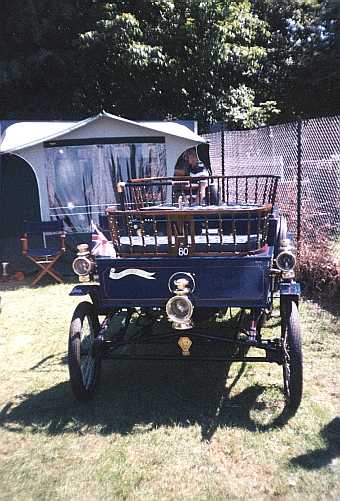
Visit the Steam Car Club of Great Britain.
Plans for a self build lightweight steam buggy
